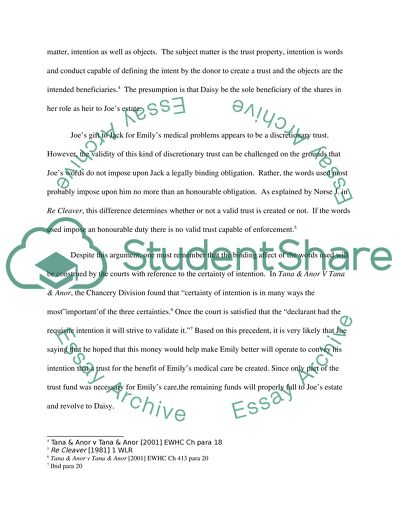Cite this document
(Purpose Trusts and Quistclose Trusts Essay Example | Topics and Well Written Essays - 1250 words, n.d.)
Purpose Trusts and Quistclose Trusts Essay Example | Topics and Well Written Essays - 1250 words. https://studentshare.org/law/1543387-resulting-trusts
Purpose Trusts and Quistclose Trusts Essay Example | Topics and Well Written Essays - 1250 words. https://studentshare.org/law/1543387-resulting-trusts
(Purpose Trusts and Quistclose Trusts Essay Example | Topics and Well Written Essays - 1250 Words)
Purpose Trusts and Quistclose Trusts Essay Example | Topics and Well Written Essays - 1250 Words. https://studentshare.org/law/1543387-resulting-trusts.
Purpose Trusts and Quistclose Trusts Essay Example | Topics and Well Written Essays - 1250 Words. https://studentshare.org/law/1543387-resulting-trusts.
“Purpose Trusts and Quistclose Trusts Essay Example | Topics and Well Written Essays - 1250 Words”. https://studentshare.org/law/1543387-resulting-trusts.


